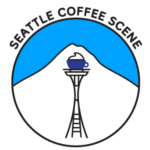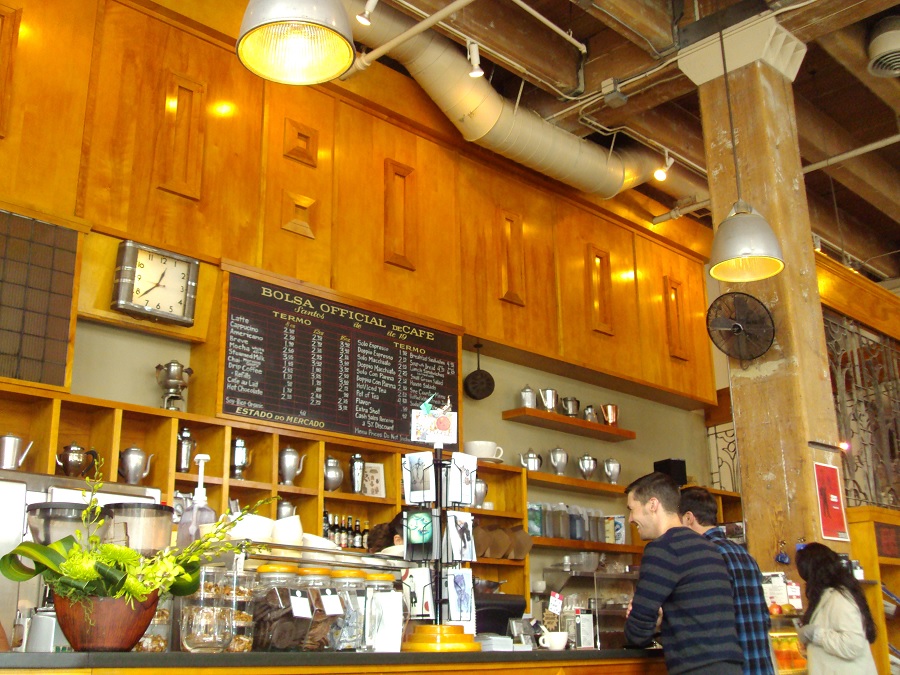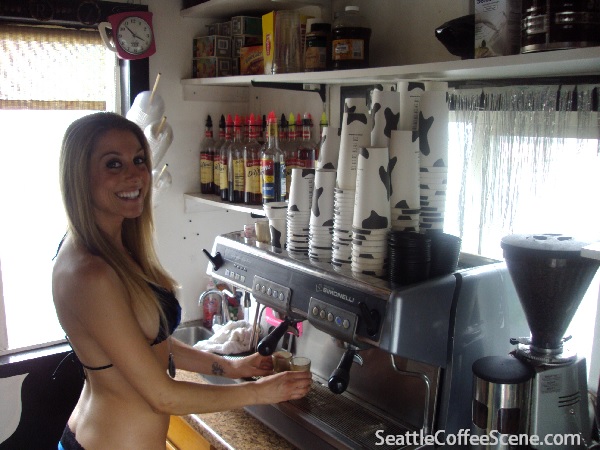
How to Start a Coffee Truck Business
Starting a coffee truck is growing in popularity around the country—especially in the Pacific Northwest—because it offers incredible flexibility, lower startup costs, and a desired product that 8 in 10 adults drink daily.
Lower rent costs are among the benefits of going mobile. In fact, many mobile coffee businesses can avoid paying rent if they work with private landowners and property managers.
In this post, I will explain the steps you might want to take when starting your mobile coffee truck. There is no right way to start a coffee truck, and from what I have seen, there are many ways to get started.
How To Start a Coffee Truck Business
Step 1: Define Your Coffee Truck Concept
There are many different and awesome possibilities for setting up a coffee truck business! You may decide to have a coffee trailer or something similar.
As you start thinking about your coffee business, consider what kind of events or places you want to serve. What type of menu would you like to have? Finally, what type of experience would you like to provide your customers?
Once you decide what you would like to create, you will want to understand what type of target customer you will look to serve.
Understanding your target customer will help you hone in on your
Unique Selling Proposition – that is, your competitive advantage. This will help you differentiate yourself from other mobile coffee operators. You can get other resources to start a coffee truck here.
- Choose a mobile setup, like a coffee truck or trailer.
- Decide on whether you want to do events or serve specific locations.
- Plan a mobile coffee menu that fits your target market.
- Define your ideal customer to create a unique selling point.
Step 2: Research the Market and Competition
If your city is anything like Seattle, you’ll face a lot of competition, and you’ll need to be ready.
One of the big benefits of running a mobile coffee truck or coffee trailer is that you are mobile! You can go anywhere the road will allow you to go – this may mean driving away from the competition.
Now, while you can drive anywhere, you’ll likely want to choose your location wisely. Because I think that competition isn’t necessarily bad. In fact, having a little competition might just be a good thing! A little competition means that there is likely a healthy market for coffee.
You want to go where you will have access to people – especially people who love coffee.
If you live in Seattle or King County, you may consider serving up your lattes or cold brew at local parks, private apartment complexes, and private lots near high-traffic intersections – or anywhere people love coffee. The possibilities are endless!
Before you choose a spot to sell coffee, you’ll want to analyze the existing competition. Parking your truck in front of a large chain coffee shop or fast food joint doesn’t make much sense. Parking in areas that may charge too much may also not make sense either. Here’s one mobile coffee trailer roastery business that we highlighted previously.
- Use your mobility to explore locations with less competition.
- Embrace competition as a sign of a strong coffee market.
- Seek spots with high foot traffic and coffee lovers, like parks or busy intersections.
- Check out the competition and parking costs before choosing a location.

Step 3: Write a Coffee Truck Business Plan
Writing a coffee truck business plan is essential. It might not seem worth it, but trust me, it certainly is!
In your plan, you’ll want to mention a few big elements, such as your mission, target customer, financial costs, and revenue projections.
Additionally, you will want to set out your vision, marketing, sales opportunities, and other vital elements specific to your mobile coffee truck—including profitability!
Why have a coffee truck business plan?
First, a mobile coffee business plan will help you focus and articulate your spinning thoughts. Settling on your concept will ultimately help you save money. Additionally, your plan will be vital if you ask for a bank loan or borrow money from family and friends.
- Writing a business plan helps you focus and organize your ideas.
- Include important parts like your mission, target customer, costs, and revenue.
- Add details on marketing, sales, and how you’ll make a profit.
- A solid plan is essential if you need a loan or funding support.
Step 4: Secure Financing for Your Coffee Truck
Coffee trucks aren’t free, so they will require money to set up.
Once you have a concept, a business plan, and a budget complete, you’ll want to figure out just how to pay for it!
For example, let’s say that you’ve determined that your coffee truck and its equipment will cost about $30,000. How will you get the funds?
You might decide to pay it all yourself or borrow at least a portion. Either way, you’ll want to determine where you will get the funding.
Remember, the costs include the coffee truck itself, coffee equipment, any electrical or plumbing installation, inspections, and inventory.
- Setting up a coffee truck costs money, so plan your budget carefully.
- Once you have a budget, decide how you’ll fund it—either self-fund or borrow.
- A typical setup might cost around $20,000 – $30,000, covering the truck, equipment, and installations.
- Don’t forget costs like inspections and initial inventory!

Step 5: Find the Right Coffee Truck
Finding the right coffee truck – or coffee trailer – for you can vary in difficulty depending on your location. Sometimes, it may not be as easy as it seems. So, you’ll want to give yourself time to research your options.
If you are located in Seattle, King County, you might have difficulty finding a truck. However, just like everything else in the Pacific Northwest, an ordinary coffee truck can cost extraordinarily. Therefore, looking further into neighboring counties, further East and South, and even out of state may make sense.
You’ll want to find a truck that fits your size, mobility, and equipment needs. Just be sure that your truck can pass King County inspections.
Some of you might build or refurbish an existing trailer or truck and turn it into a coffee trailer. This can be a great option, though it might require more expertise.
- Finding a coffee truck takes time and research.
- In Seattle, trucks can be pricey; consider looking in nearby areas.
- Choose a truck that fits your size and equipment needs and passes inspections.
- Building or refurbishing a trailer is an option, but it may need extra skills.

Step 6: Obtain Licenses, Permits, and Insurance
During your business plan research, you will want to understand the necessary requirements that make up your licenses and permits.
Your coffee truck permits and licenses impact everything from your plumbing, electrical, and menu, so be sure to understand what is required of you before spending any real money.
Ultimately, the whole reason inspections are important is to protect you and your customers from food-borne illnesses.
So, it will be important to get your installations and permits right. In addition, you never know what the future holds, so getting insurance is important, too.
- Research local requirements for licenses and permits early—they cover plumbing, electrical, and your menu.
- Inspections help protect you and your customers from health risks.
- Don’t skip insurance; it’s essential for future security.
Step 7: Purchase Equipment and Supplies
Your coffee truck menu will decide what type of equipment you’ll need. So once you have a lock on your menu (and this requires you to understand your target market!), you’ll be able to decide on what type of equipment you’ll need.
We are lucky because, in Seattle, we have some great options for visiting coffee equipment stores before ordering. They are easily searchable online.
In addition to your equipment, establish where you will get your supplies and wholesale items (coffee, milk, syrups, food, paper products, etc.). You might work with multiple vendors, such as wholesale coffee roasters and cash-and-carry vendors.
- Your menu will guide your equipment needs.
- Know your target market before choosing equipment.
- Check out local equipment stores in Seattle; they’re easy to find online.
- Plan where to source supplies—like coffee, milk, and syrups—from vendors and wholesalers.
Step 8: Design Your Menu
Your coffee truck menu is the whole reason for your business. To develop your menu, consider your mission and vision for your mobile coffee business. For example, you might decide to work exclusively at corporate meetings, weddings, or special events. Your customers will likely be different if you are parked at the King Street train station.
I recommend that you build a menu with a core menu and seasonality aspect. In the Fall, you might serve pumpkin spice lattes; in the winter, it might be candy cane lattes; in the Spring, you might see oat lattes; and in the summer, lemonade and cold brews.
- Your menu reflects your coffee truck’s mission.
- Match your menu to events or locations.
- Include a core menu plus seasonal items (e.g., pumpkin spice, candy cane).
- Change offerings seasonally to keep interest high.
How to Start a Coffee Truck

Step 9: Branding and Marketing
When you have a small business like a coffee truck, you’ll need to develop your branding. Your coffee truck branding will incorporate your logo, colors, slogan, and messaging.
Utilizing your social media will be vital to developing your communication with loyal customers. After all, if your customers don’t know where to find you or anticipate where you will be, they can’t buy from you!
Step 10: Find a Commercial Commissary
As a coffee truck operator, you might need a kitchen commissary. Commissaries are essential for passing inspections in most health departments, including King County.
Fortunately, because of the robust food truck industry, you’ll likely have your pick of local commissaries with whom you can work. In addition, you might be able to work with a restaurant or another coffee shop to help provide you with those things a commissary would need.
Step 11: Launch and Promote Your Coffee Truck
After you’re all set and ready to go, you’ll be ready to launch and promote your coffee truck.
You may initially plan on promoting your truck on your own social media, but you may also want to reach out to local community blogs, online news sites, and even radio.
Additionally, connect with local organizations, schools, churches, and businesses to set up special days with them.
Step 12: Day-to-Day Operations and Growth
After everything is said and done, the real work starts. After setting up your business, you must manage the day-to-day operations. This includes managing your inventory and any employees you wish to hire, as well as training and budgeting.
Start a Coffee Truck Guide
Conclusion
The following is the summary of the steps I’ve just outlined:
Step 1: Define Your Coffee Truck Concept
Step 2: Research the Market and Competition
Step 3: Write a Coffee Truck Business Plan
Step 4: Secure Financing for Your Coffee Truck
Step 5: Find the Right Coffee Truck
Step 6: Obtain Licenses, Permits, and Insurance
Step 7: Purchase Equipment and Supplies
Step 8: Design Your Menu
Step 9: Branding and Marketing
Step 10: Find a Commercial Commissary
Step 11: Launch and Promote Your Coffee Truck
Step 12: Day-to-Day Operations and Growth
Coffee trucks and coffee trailers offer great opportunities to create a profitable business. By setting out, researching, planning, developing an appropriate budget, and executing your plan, you’ll likely be one of the luckiest entrepreneurs around. If you’d like more information on starting a coffee truck check out the mobile coffee guide by Coffee Shop Startups, How to Start a Mobile Coffee Business.
How to Start a Coffee Truck
Related Questions:
What are some example coffee truck ideas?
There are endless possibilities for the types of coffee truck businesses you can set up. For example, you might consider opening a coffee and bagel truck, serving early morning commuters and office workers. In the summer, you can have a coffee and ice cream truck. You might decide to open a refurbished coffee trailer from a camper or horse trailer serving fresh coffee and donuts. Or switch it up and offer waffles, cinnamon buns, or vegan pastries. You might also consider offering coffee with other revenue streams, such as plants and flowers. You might get really daring and decide to open up a coffee trailer roastery. The possibilities with coffee trucks are just endless.
How to Buy a Coffee Truck
Buying a new or used coffee truck can be tricky. I recommend that before you buy your coffee truck (new or used), consider a few essential things. The first is knowing your concept. What type of coffee business do you want to be, and who do you want to serve? This will help drive your direction as you look at your available options. Second, understand your budget. Know what you can pay or what you can afford. This might help you determine whether you are looking for a smaller or larger coffee truck or whether you want to buy a new or used one. Third, consider the local codes and permitting issues you’ll need.
How Much Money Should I Have To Start a Coffee Truck?
Most new or used coffee truck businesses cost between $15,000 and $60,000. Determining the cost range for your coffee truck should be at the top of your planning list. While this might seem like a significant investment, the larger picture is that it is affordable to start a coffee business. Other important factors must be understood when looking at a coffee truck’s price tag. These would include the size, condition, and whether it’s a used or new coffee truck. Does the truck come with coffee equipment? Should it be retrofitted to pass your local health inspections?
Buy The Coffee Truck Guide






